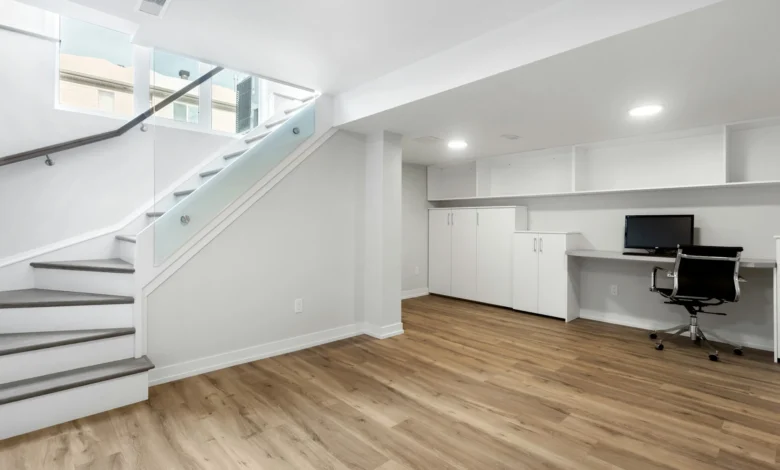
A Builder’s Guide To Creating Moisture-Resistant Basements
Basements are an incredibly valuable part of any home, offering additional living space, storage, or even a place to install essential systems. However, due to their location below ground, basements are especially prone to moisture issues. Water infiltration can cause serious structural damage, mould growth, and unpleasant odours if not addressed properly. For builders, creating a moisture-resistant basement is key to ensuring a home’s longevity and safety. Here’s a guide to help you achieve a dry, durable basement that stands up to moisture challenges.
1. Start with High-Quality Waterproofing Membranes
The first and most important step in creating a moisture-resistant basement is using high-quality waterproofing membranes. These are essential for preventing water from penetrating the basement’s walls and floors. Applying a waterproof membrane to both the exterior and interior walls provides an effective barrier against moisture. Products from Visqueen are particularly well-regarded for their durability and effectiveness in preventing water infiltration. Their range of damp-proofing and waterproofing solutions ensures that your basement stays dry even in areas with high water tables or heavy rainfall.
2. Ensure Proper Drainage Systems Are in Place
No amount of waterproofing can fully protect a basement if there isn’t adequate drainage around the foundation. Proper drainage systems prevent water from pooling around the base of the home, which can lead to leaks and cracks in the foundation. French drains, for example, can effectively divert water away from the foundation, reducing the risk of infiltration. Additionally, installing a sump pump can protect basements in areas prone to heavy rain or groundwater issues by pumping excess water away from the property. Ensuring your drainage system is functioning properly is a key factor in keeping your basement moisture-free.
3. Install Damp-Proof Membranes Under Flooring
Damp rising from the ground can easily penetrate basement floors if not properly managed. To protect against this, builders should install a damp-proof membrane (DPM) beneath the concrete slab. This barrier helps to prevent moisture from seeping through the floor and into the basement. Visqueen offers a variety of DPM products designed specifically for construction projects, providing builders with dependable solutions for moisture management in below-ground spaces. A well-installed DPM ensures the longevity of your flooring and prevents damage from rising damp.
4. Seal All Gaps and Cracks
Even small gaps and cracks in a basement’s foundation, walls, or around windows can allow moisture to seep in. It’s essential to seal all potential entry points for water with high-quality sealants. Expanding foam or flexible sealants are ideal for filling cracks and joints, ensuring a tight seal. Additionally, ensure that windows and vents are properly sealed and that any openings are equipped with waterproof coverings. This not only prevents water from entering but also improves insulation, which helps regulate temperature and moisture levels.
5. Use Vapour Barriers to Control Moisture
In addition to waterproofing membranes, vapour barriers are another important tool in moisture control. Vapour barriers help to control the movement of moisture within the walls and prevent condensation from building up in the basement. This is particularly important for finished basements where drywall and insulation are installed. By using a vapour barrier, you can prevent moisture from getting trapped behind walls, which can lead to mould growth and structural damage.
6. Ensure Proper Ventilation
Proper ventilation is often overlooked in basement construction but is crucial for managing moisture levels. Without sufficient air circulation, moisture can build up, leading to damp conditions and the potential for mould growth. Installing a ventilation system, such as exhaust fans or air vents, helps remove excess moisture and keep the basement dry. A dehumidifier can also be used to manage moisture levels, especially in humid climates or during wetter seasons.
7. Choose Moisture-Resistant Materials
When finishing a basement, it’s important to select materials that can withstand exposure to moisture. Opt for moisture-resistant drywall, paints, and insulation to reduce the risk of water damage. For flooring, consider materials like tile, vinyl, or treated concrete that are less susceptible to water damage compared to wood or carpet. These materials not only protect against moisture but also extend the life of your basement’s finishes.
8. Regularly Inspect and Maintain
Even the most well-built basement requires ongoing inspection and maintenance to stay moisture-free. Regularly check for signs of water infiltration, such as damp spots, mould growth, or musty odours. Ensure that your drainage system, sump pump, and waterproofing measures are all functioning as they should. Addressing small issues early can prevent larger, more costly problems down the line.
Conclusion
Building a moisture-resistant basement requires careful planning and the use of high-quality materials. By implementing the right waterproofing strategies, such as using membranes and damp-proof solutions from Visqueen, ensuring proper drainage, and selecting moisture-resistant finishes, you can create a basement that stands up to the challenges of water and moisture. Following these best practices will help you build a durable, safe, and dry basement that will serve homeowners for years to come.







